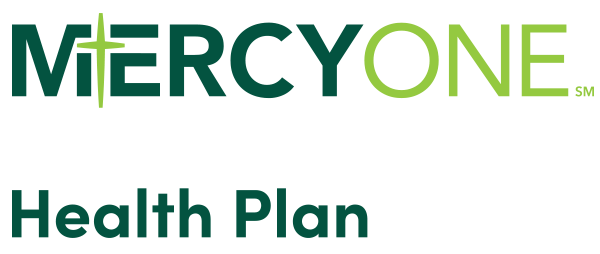Understanding Your Share of Costs
Understanding your Medicare costs doesn't have to be overwhelming. We're here to guide you every step of the way, making it simple to know what to expect so you'll feel confident navigating your health care costs and getting the care you need.
How Medical Costs Are Shared
During your visit or treatment, you might need to pay a part of the cost through a copay, coinsurance, or deductible.
Deductible
A deductible is the amount you must pay out of pocket for covered services before your health plan starts to pay. After meeting the deductible, you may be responsible for paying a copay or coinsurance, depending on your plan. Good news for MercyOne Health Plan members — we have a $0 annual medical deductible on all plans. So instead of having to meet a deductible, you'll move right into cost sharing with the plan.
Copay
A copay, or copayment, is a fixed amount you pay for covered health care services.
Coinsurance
Coinsurance is a percentage of the cost of a covered health care service that you must pay after you’ve met your deductible.
Refer to your Evidence of Coverage for a complete list of covered benefits and cost shares.
How Medication Costs Are Shared
Paying for prescriptions with MercyOne Health Plan is simple and flexible. Your costs depend on two factors: prescription drug stages and cost-sharing tiers.
Prescription Drug Stages
Medicare prescription drug stages refer to the different phases of cost-sharing that beneficiaries go through each year in their Medicare Part D prescription drug plan. These stages determine how much you and the plan pay for your prescription medications throughout the year. Here’s a simple breakdown of each stage:
Yearly Deductible Stage
If you select a plan without a Part D deductible, you will find immediate savings by skipping the deductible stage.
If you select a plan with a deductible, you will pay full price for your Tier 3, Tier 4 and Tier 5 covered prescriptions until you meet your yearly Part D deductible. Once the annual deductible is met, the plan will begin to cover the cost of your drugs based on the plan’s prescription drug benefits. While deductibles can vary from plan to plan, no plan's deductible can be higher than $590 in 2025 or $610 in 2026. Some plans may have a reduced or no deductible.
Initial Coverage Stage
This stage begins once you've met your deductible, and it continues until your total drug costs reach a specified limit. In 2025, this limit is $2,000; in 2026, this limit is $2,100. In this phase, you will either pay a copay or coinsurance (a percentage of the drug’s cost) when you have a prescription filled.
Catastrophic Coverage Stage
Once your out-of-pocket costs reach the annual limit, your plan will cover most of your drug costs.
Cost-Sharing Tiers
Medicare cost-sharing tiers for drugs are a system used by Medicare Part D plans to classify prescription medications into different categories, each with varying costs. These tiers determine how much you will pay for your medications at in-network pharmacies. Here's a general breakdown of the tiers:
Tier 1: Preferred Generics
Tier 2: Generics
Tier 3: Preferred Brands
Tier 4: Non-Preferred Drugs
Tier 5: Specialty Drugs
Visit the Formulary page to find a list of all plan-covered covered drugs as well as access our online formulary search tool to help you estimate your drug costs for the year.
Have questions? We're here to help
If you have questions about your plan coverage or costs, don't hesitate to call Member Services at 1-800-240-3851 (TTY 711). Our representatives are available daily from 8 a.m. to 8 p.m. to assist you.
This page was last updated 10/01/2025